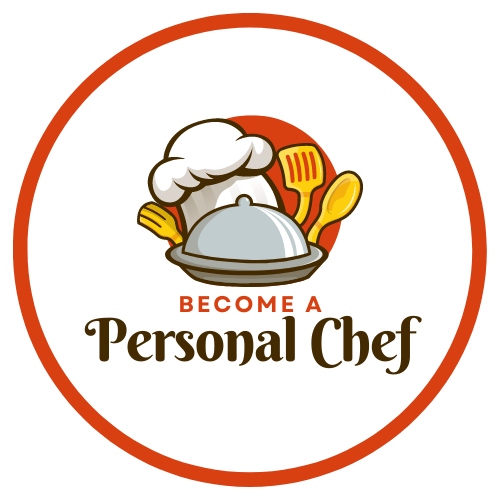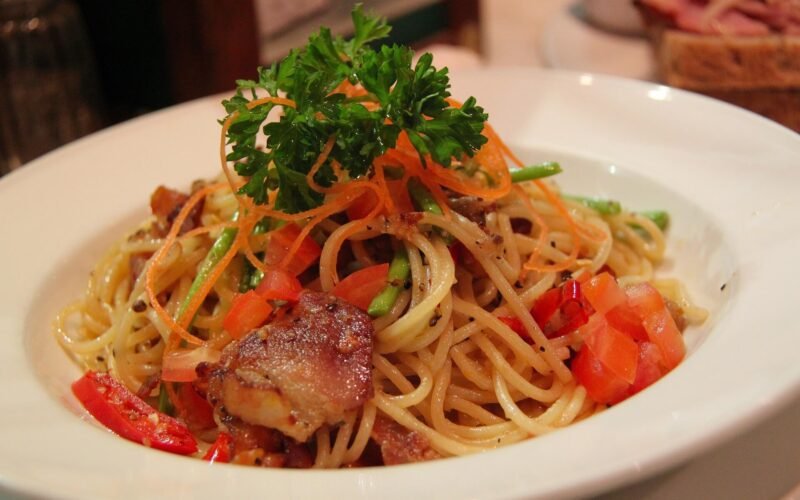Table of Contents
ToggleSingaporean Food for Personal Chefs
Singaporean cuisine is a gastronomical journey that reflects the country’s rich cultural diversity. As personal chefs, our culinary exploration today takes us to the heart of Singapore, where we’ll delve into the key ingredients, cooking methods, and cultural significance of this vibrant cuisine.
Whether you’re a personal chef looking to expand your repertoire or simply curious about Singaporean food, let’s discover the unique flavors and dishes that make this cuisine so beloved.
Singapore is a small but mighty country, and its cuisine reflects the diverse influences of its multi-ethnic population. Chinese, Malay, Indian, and Western cultures all come together in Singaporean food to create a vibrant fusion of flavors. This blend of culinary traditions has resulted in a unique range of dishes that are both delicious and culturally significant.
Aspiring personal chefs need to offer something different than traditional chefs who specialize in one or two kinds of cuisines. I’ve written an extensive article with links to many cuisines for your consideration – World Cuisine for Personal Chefs
Key Ingredients in Singaporean Cuisine
Singaporean cuisine is an amalgamation of Chinese, Malay, Indian, and Peranakan influences. Key ingredients include rice flour, wheat flour, various meats, seafood, pickled vegetables or fruits, dried chili, peanuts, spices, and tropical fruits such as durian, mangosteen, lychee, pineapple, longans, and rambutans. Ginger, black and white peppers, and chilies also feature heavily in many dishes.
Sourcing Local Ingredients
While some ingredients like durian or other tropical fruits might be harder to source locally, most can be found at local grocery stores or Asian markets. For those hard-to-find items, consider looking for substitutes or sourcing them online.
Traditional Cooking Methods
Singaporean cuisine often involves stir-frying, steaming, and grilling. Many dishes feature main ingredients cooked in a mix of spices, herbs, and other flavorings, creating a symphony of tastes.
Dominant Flavors and Spice Adjustments
Singaporean cuisine is renowned for its robust flavors, often featuring a balance of sweet, sour, spicy, and umami notes. While some dishes can be quite spicy due to the use of chili peppers, the spice levels can be adjusted to suit your client’s preferences.
Cultural Significance of Singaporean Cuisine
The diversity of Singaporean cuisine mirrors the country’s multicultural society. Each ethnic group has contributed its unique dishes and cooking techniques, creating a vibrant culinary scene that’s deeply ingrained in the country’s cultural fabric.
Dietary Considerations and Health Aspects
While Singaporean cuisine can be rich and flavorful, it also caters to a variety of dietary needs. Many dishes are based on plant-based proteins like tofu, making them suitable for vegetarians. However, as always, consider your client’s dietary restrictions or allergies when preparing these dishes.
Traditional Accompaniments
Singaporean meals often include a variety of side dishes, from stir-fried vegetables to pickles. Drinks might range from sweet iced tea to fruit juices, while desserts could feature local fruits or sweet treats like cakes and puddings.
Presentation and Serving
Presentation in Singaporean cuisine is usually simple and colorful, reflecting the vibrant ingredients used. Meals are typically served family-style, with a selection of dishes placed in the middle of the table for everyone to share.
Variations and Preparation
Singaporean cuisine varies significantly across the country, with each ethnic community offering its unique dishes. For instance, Indian-influenced dishes can be found in Little India, while Chinatown is known for its Chinese fare. As a personal chef, you can explore these regional variations to create a diverse menu for your clients.
Singaporean Food for Personal Chefs
Incorporating your client’s preferences into this cuisine while maintaining its authenticity can be an exciting challenge. Adjusting spice levels, choosing locally sourced ingredients, or presenting the meal in an appealing way – there’s plenty of room for creativity in Singaporean cuisine.
Footnotes

